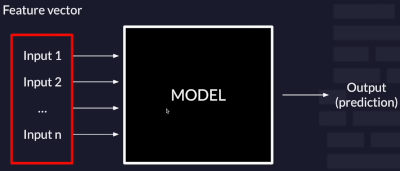Machine Learning Course: Difference between revisions
Created page with "=Introduction= This is to capture some terms in machine learning course<br> 400px =Terms=" |
|||
| Line 4: | Line 4: | ||
=Terms= | =Terms= | ||
They discussed the following | |||
==Types of Data== | |||
*Nominal data | |||
*Ordinal data | |||
*Discrete data | |||
*Continuous data | |||
'''Nominal Attributes''' : Nominal attributes, as related to names, refer to categorical data where the values represent different categories or labels without any inherent order or ranking. These attributes are often used to represent names or labels associated with objects, entities, or concepts. Example colours, Sex<br> | |||
<br> | |||
'''Ordinal Attributes''' : Ordinal attributes are a type of qualitative attribute where the values possess a meaningful order or ranking, but the magnitude between values is not precisely quantified. In other words, while the order of values indicates their relative importance or precedence, the numerical difference between them is not standardized or known. Example grades, payscale<br> | |||
<br> | |||
'''Discrete''' : Discrete data refer to information that can take on specific, separate values rather than a continuous range. These values are often distinct and separate from one another, and they can be either numerical or categorical in nature. Example Profession, Zip Code<br> | |||
<br> | |||
'''Continuous''' : Continuous data, unlike discrete data, can take on an infinite number of possible values within a given range. It is characterized by being able to assume any value within a specified interval, often including fractional or decimal values. Example Height, Weight<br> | |||
Revision as of 23:23, 19 April 2025
Introduction
This is to capture some terms in machine learning course

Terms
They discussed the following
Types of Data
- Nominal data
- Ordinal data
- Discrete data
- Continuous data
Nominal Attributes : Nominal attributes, as related to names, refer to categorical data where the values represent different categories or labels without any inherent order or ranking. These attributes are often used to represent names or labels associated with objects, entities, or concepts. Example colours, Sex
Ordinal Attributes : Ordinal attributes are a type of qualitative attribute where the values possess a meaningful order or ranking, but the magnitude between values is not precisely quantified. In other words, while the order of values indicates their relative importance or precedence, the numerical difference between them is not standardized or known. Example grades, payscale
Discrete : Discrete data refer to information that can take on specific, separate values rather than a continuous range. These values are often distinct and separate from one another, and they can be either numerical or categorical in nature. Example Profession, Zip Code
Continuous : Continuous data, unlike discrete data, can take on an infinite number of possible values within a given range. It is characterized by being able to assume any value within a specified interval, often including fractional or decimal values. Example Height, Weight